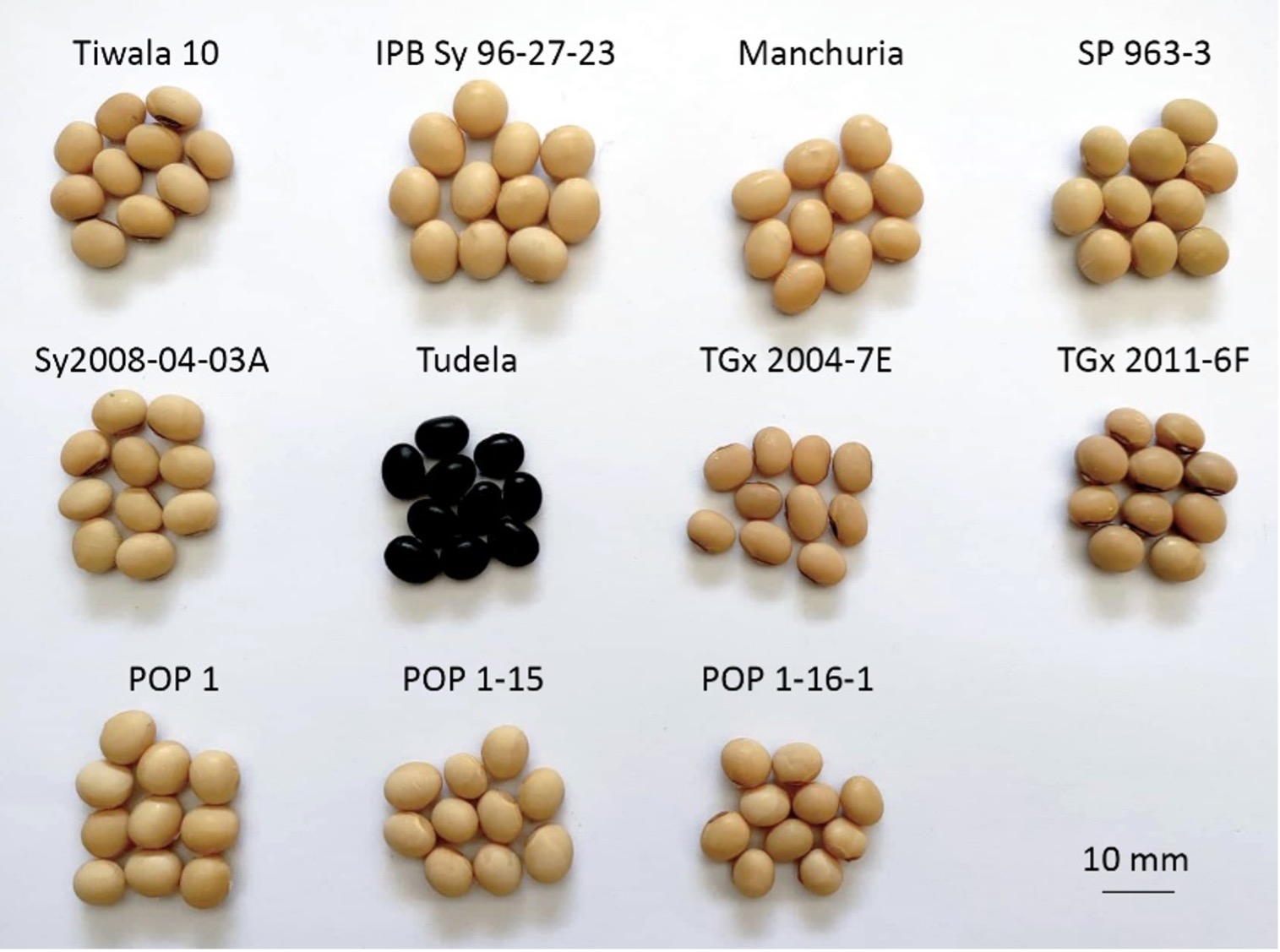VOLUME 15 NUMBER 2 (July to December 2022)

SciEnggJ. 2022 15 (2) 166-178
available online: November 30, 2022
*Corresponding author
Email Address: amdelosreyes4@up.edu.ph
Date received: June 15, 2022
Date revised: September 27, 2022
Date accepted: November 20, 2022
ARTICLE
Genotype profiling, population structure, and seed size traits association analyses using five polymorphic SSR markers in soybean [Glycine max (L.) Merr.] genotypes available in the Philippines
Anna Mae M. de los Reyes*1, Maura Mercedes L. Santos1, Villamor A. Ladia Jr.1, Rodel G. Maghirang1, Elmer E. Enicola1, and Eureka Teresa M. Ocampo2
1Institute of Plant Breeding (IPB),
College of Agriculture and Food Science (CAFS),
University of the Philippines, Los Baños (UPLB), College, Laguna
2Institute of Crop Science (ICropS)
College of Agriculture and Food Science (CAFS),
University of the Philippines, Los Baños (UPLB), College, Laguna
College of Agriculture and Food Science (CAFS),
University of the Philippines, Los Baños (UPLB), College, Laguna
2Institute of Crop Science (ICropS)
College of Agriculture and Food Science (CAFS),
University of the Philippines, Los Baños (UPLB), College, Laguna
Seed size is a fundamental attribute considered in soybean production with relevance in yield components and intended use in food processing. Analyses of seed size-relevant quantitative traits using molecular markers provide useful information to aid in more efficient breeding programs. This research aims to perform genetic and population structure analyses in a large soybean population comprised of 109 individuals using five polymorphic seed weight-associated SSR markers from the BARCSOYSSR database (soybase.org), and to examine the association of these markers with relevant traits. Low to high observed heterozygosity (0.073–0.835) and high polymorphism information content (PIC; 0.733–0.846) were calculated through allele frequency-based analyses. Genotypes were grouped into four clusters based on NJ dendrogram, whereas, two subpopulations (K=2) were estimated via STRUCTURE. Majority of genotypes from the NOMIARC collection grouped under cluster III; consistent with the collection belonging to one of the inferred subpopulations. Genotypes from IPB and IITA collections showed no distinct groupings. Finally, marker-trait association analysis using GLM determined BARCSOYSSR_08_1032 to be significantly associated with single-seed weight, length, and width; and BARCSOYSSR_08_1246 with seed length. MLM approach did not produce any significant associations. The two markers may be forwarded for recommendation for application on a more diverse population in terms of number and background. Furthermore, assessment of markers across chromosomes is deemed to yield more information. Conclusively, the preliminary study was able to provide insight in the performance of the SSR markers. If achieved, finding consistently useful markers would pave the way to application in marker-assisted selection in soybean breeding.
© 2025 SciEnggJ
Philippine-American Academy of Science and Engineering